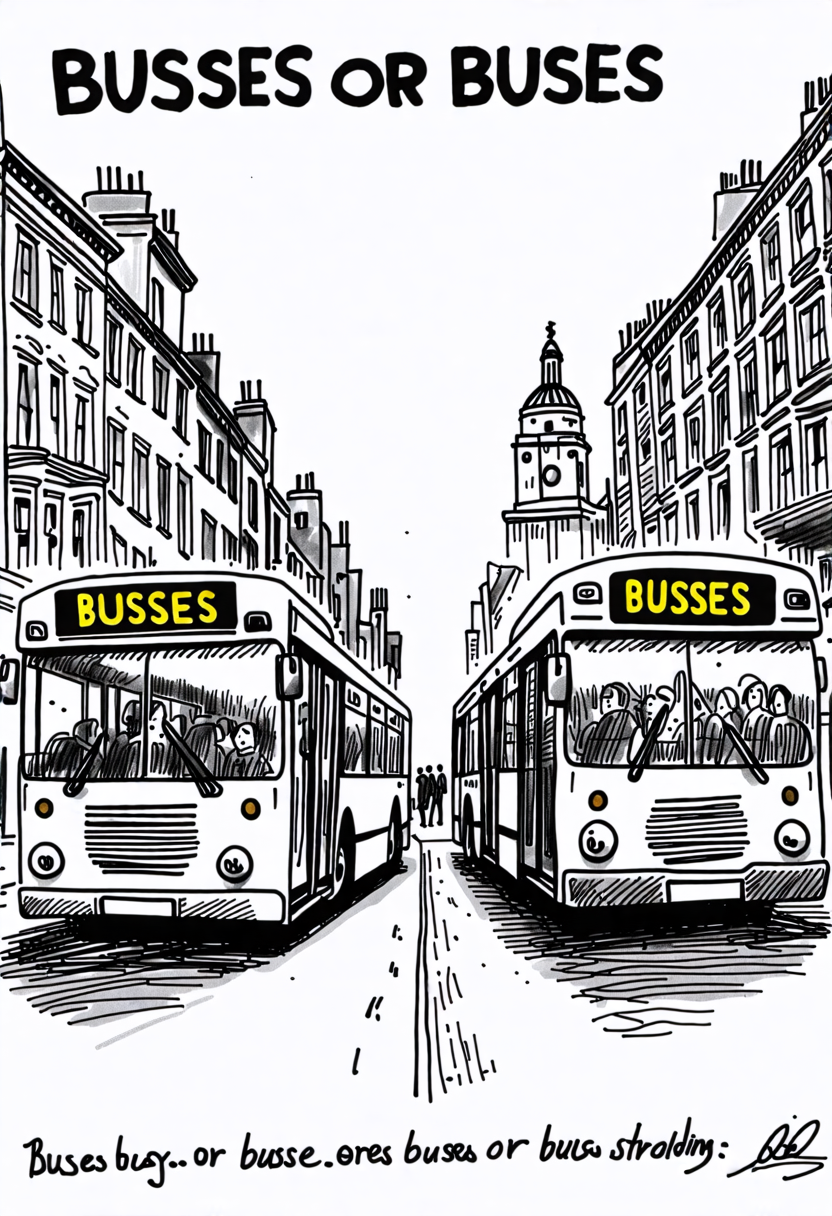Busses or Buses
The correct plural form of ‘bus’ is ‘buses.’ Historically, ‘busses’ was also used, but ‘buses’ became more dominant by the mid-20th century. In contemporary English, ‘buses’ is the widely accepted form in both American and British English. Spelling variants and irregular plurals are common in the English language and understanding these can enhance writing clarity.
Definition of Bus
A bus is a large motor vehicle designed to carry multiple passengers, typically operating on a scheduled route. It serves as a critical component of public transportation systems worldwide.
Buses are used for various purposes, including school transport, city commuting, and long-distance travel. They come in different sizes, ranging from small minibuses to large double-decker buses. Each bus is equipped to handle numerous passengers, providing an efficient means of transport.
Modern buses often include amenities such as air conditioning, Wi-Fi, and wheelchair accessibility. They contribute to reducing traffic congestion and environmental impact by offering mass transit solutions. Overall, buses play an essential role in facilitating daily commutes and ensuring mobility for diverse populations.
Historical Usage Trends
The historical usage trends of the terms ‘busses’ and ‘buses’ reveal shifting preferences in English over time.
In the early 20th century, ‘busses’ was a common plural form. However, as language evolved, ‘buses’ became the standard. This change likely reflects a broader trend towards simplifying English spelling.

Data from various linguistic corpora show ‘buses’ gaining dominance by mid-century. This shift was influenced by educational systems and standardized spelling in published materials.
While ‘busses’ can still be found, particularly in older texts, modern usage heavily favors ‘buses.’ This preference is now widely accepted in both American and British English, making ‘buses’ the preferred plural form in most contemporary writing.
Grammar Rules for Plurals
Understanding grammar rules for plurals is essential for mastering English writing.
The most common method to form a plural is by adding -s or -es to the end of a noun. For example, ‘bus’ becomes ‘buses’ by adding -es.
However, not all nouns follow this straightforward rule. Irregular plurals exist, such as ‘cactus’ becoming ‘cacti’ and ‘dice‘ remaining ‘dice’ in plural form.
Recognizing the distinction between regular and irregular plurals is vital for accurate writing. Regular plurals typically follow predictable patterns, while irregular plurals need to be memorized.
Mastering these rules enhances clarity and precision in communication, making your writing more effective.
Common Spelling Variants
In addition to pluralization rules, English also presents common spelling variants that can cause confusion among writers. These variants often arise from differences in American and British English, but some are simply accepted alternatives. Understanding these can enhance clarity and reduce errors in writing. Below is a table illustrating some common spelling variants:
| American English | British English |
|---|---|
| color | colour |
| center | centre |
| theater | theatre |
| organize | organise |
Awareness of these variants is important, especially for writers working in international contexts. Consistency in spelling within a document ensures professionalism and readability.
Regional Differences
Regional differences in language often lead to variations in spelling, pronunciation, and usage. The word ‘bus’ is a prime example. In American English, the plural form ‘buses’ is commonly used. However, in British English, both ‘buses’ and ‘busses’ are accepted, though ‘buses’ is more prevalent.
These differences can sometimes cause confusion for writers and readers alike. Understanding regional preferences is crucial for clear communication. It is also important to take into account the audience when choosing which form to use.
Influence of Modern Usage
Modern usage has increasingly favored the plural form ‘buses’ over ‘busses’ due to its simplicity and widespread acceptance. This shift is evident in educational materials, transportation policies, and everyday communication.
The move towards ‘buses’ aligns with a broader trend in the English language where simpler and more intuitive forms gain popularity. Technology and digital platforms reinforce this shift by suggesting ‘buses’ as the correct pluralization.
This choice also minimizes confusion, especially for non-native speakers and young learners. As language evolves, ‘buses’ has become the dominant form, reflecting contemporary norms and practices.
The shift underscores the dynamic nature of English and its responsiveness to modern usage patterns.
Examples in Literature
Many literary works illustrate the use of ‘buses’ to depict everyday scenes and transportation themes. Authors often use buses as symbols of routine, community, and movement.
Here are some notable examples:
- ‘Harry Potter’ Series by J.K. Rowling: The Knight Bus serves as a magical, emergency transport for witches and wizards.
- ‘The Catcher in the Rye’ by J.D. Salinger: Holden Caulfield frequently rides buses, highlighting his journey through New York City.
- ‘On the Road’ by Jack Kerouac: Buses are part of the road trip experience, showing the exploration and freedom of the characters.







